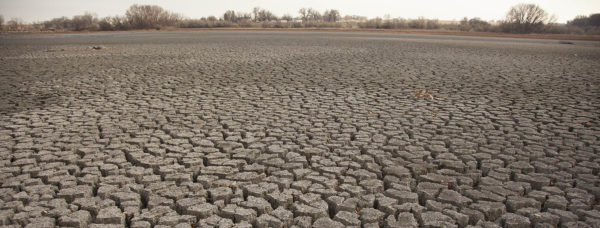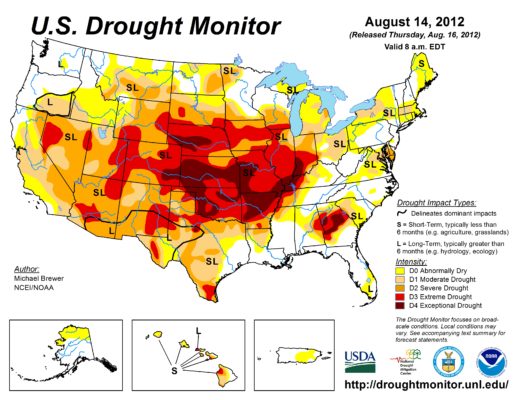Flash drought

In 2012, countless lakes across the central United States went dry, including this one, Teller Lake No.5, in eastern Boulder County, Colorado. Credit: UCAR. Photo by Carlye Calvin.
Good science rests on the adoption of universally accepted definitions of terms. Scientists need confidence that when they use a term its meaning will be unambiguous.
Currently, a debate continues in the climate community about the definition of “flash drought” says Jason Otkin, a drought researcher at the University of Wisconsin-Madison Cooperative Institute for Meteorological Satellite Studies (CIMSS).
While droughts with rapid intensification have occurred throughout history, it wasn’t until the early 2000s that researchers began identifying them as flash droughts.
The term “drought” is commonly regarded as a climate phenomenon that evolves over an extended period of time, like the Dust Bowl drought of the 1930s that lasted for many years. But sometimes, droughts can develop in a matter of months rather than years.
This specific sub-definition of drought that focuses on how fast it develops is the one that Otkin and others would like defined as flash drought.

Jason Otkin atop the Atmospheric, Oceanic and Space Sciences building on the UW-Madison campus. Credit: SSEC.
Otkin, and co-authors from university, industry and government laboratories make their case for a refined definition of flash drought in an essay published in the May 2018 issue of the Bulletin of the American Meteorological Society (AMS). The paper highlights recent research on the phenomenon and reviews the literature to present the author’s case for a preferred definition.
Not all scientists are using the same definition when it comes to flash drought, says Otkin. This ambiguity, and lack of consensus, creates confusion within the scientific community. Some researchers, he says, focus on duration, but Otkin is advocating for a different definition, one that incorporates the concept of a rapidly intensifying drought, focusing on rate of development as opposed to its duration.
According to the American Meteorological Society’s (AMS) Glossary of Meteorology, the authoritative source for meteorological definitions, drought is a “period of abnormally dry weather sufficiently long enough to cause a serious hydrological imbalance” so longevity – or duration – as well as impact, are already reflected in our discipline’s lexicon, explains Otkin.
One of the fundamental problems is that droughts need to have impacts over extended periods of time. “From my perspective,” says Otkin, “if you label a 5-day weather event, one of short duration, as flash drought, that is a synoptic weather feature, not a flash drought. Nor is it climate, because climate events such as drought occur over a longer period of time.”

The U.S. Drought Monitor map for Aug. 14, 2012 shows a large swath of the US in severe to exceptional drought. Credit: National Drought Mitigation Center, University of Nebraska-Lincoln.
Several recent droughts fit the proposed definition of flash drought. In 2012, severe drought during the summer led to much lower crop yields and livestock losses of more than $30 billion in important agricultural areas across the central US. During this time, record high temperatures combined with too little rain and too much sunshine led to a drought that developed quite rapidly over a 2-month period across the nation’s mid-section. These conditions, if they persist, can accelerate the process of evapotranspiration—when water evaporates from the soil—causing extreme stress on vegetation due to the rapid depletion of soil moisture.
Likewise, in fall 2016, extreme drought emerged in the southeastern US over a short period of three months. Both of these events led to an increased fire risk as well as significant agricultural losses. In each instance, regions that were experiencing near-normal conditions rapidly fell into extreme drought.
It is these types of situations, when droughts develop quickly, that pose challenges for populations and industries, leaving them little time to anticipate and prepare for adverse effects such as widespread crop losses, fires and reduced water supplies.
What is the next step? With continuing discussion among scientists, Otkin hopes to submit the term “flash drought” to the AMS for further vetting within the community, eventually leading to its inclusion in the Glossary of Meteorology.
If we can agree on the characteristics of flash drought, says Otkin, then we can figure out what we need to do to predict and monitor them. “In the end, we want to be able to alert groups about possible impacts on crops, livestock, and other ecosystems.”
Reference: Otkin, J.A., Svoboda, M., Hunt, E.D., Ford, T.W., Anderson, M.C., Hain, C., and Basara, J.B., 2018: Flash droughts: A review and assessment of the challenges imposed by rapid-onset droughts in the United States. Bulletin of the American Meteorological Society, 99, 911-919, https://doi.org/10.1175/BAMS-D-17-0149.1.
This work was funded by the NOAA Climate Program (CPO) Office Modeling, Analysis, Predictions, and Projections program, the NOAA CPO Sectoral Applications Research Program and the USDA National Institute of Food and Agriculture.
By Jean Phillips
